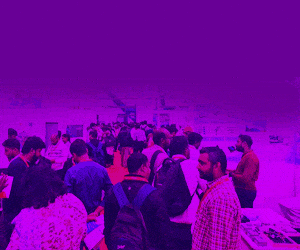What is a vertically integrated battery company? What are the advantages of battery swapping over battery charging? Roadblocks in the adoption of battery swapping technology? Sharad Bhowmick from EFY spoke to Ganesh Moorthi, CTO of Renon India to find answers to these questions. Ganesh has a deep understanding of Li-Ion chemistries and has spearheaded the technology development of Low Voltage Battery management systems with different AFEs and different architectures.

Q. Please tell me about your company and the idea with which the company was started.
A. We at Renon India Private Limited would like to call ourselves an energy storage company. We aim to become a vertically integrated battery company. This is predominantly because energy storage especially electrical energy storage, technology is still evolving, and we see lithium-ion as one step towards the whole electrification part across different industries.
Renon India Private Limited was started in the year 2019. And at that point in time, if you see the lithium-ion battery pack costs were coming down to less than $200 per kilowatt hour. This was the point of transition because, in 2017, there was this Giga factory watch war, which was happening in all of Europe, America and China. And apart from this, that’s the period when you see a lot of commitment towards curbing pollution, especially carbon emissions, carbon neutral and carbon negative were the buzzwords at that point in time. So, the founders of Renon were really passionate about renewable energies and contributing to greenification of energy.
Q. What do you mean by being a vertically integrated battery company?
A. A vertically integrated battery company can be defined as a company that builds all the core critical components of the battery. I would say, we look at ourselves as battery experts. So, the first and foremost aspect is being a vertically integrated company, i.e. we deal with all technologies and products that are needed to, build a battery pack. And lithium-ion battery pack is something which we would like to build completely in-house.
So, we deal with all the core critical components, the cells, the battery management system, and other value adds that go on top of the battery pack. When we talk about cells, we believe that this is not the right time to enter cell development and cell manufacturing, because the technology is still evolving, it is not yet matured. Hence, we are not touching that space, but apart from that, we are into every other technology related to battery space and are working on each and every aspect including the engineering aspects of building a battery pack.
Q. According to you, apart from the cell, what is the most important component of a battery pack?
A. The second most important component in a battery pack is the battery management system (BMS). In a lead acid battery, you cannot accurately track the different states of the battery pack such as the state of charge, the state of the energy state of power, state of health, whereas the lithium-ion battery packs give accurate information about all their states and also owing to very high energy density and part of density in the battery packs in the lithium-ion battery packs, it also needs to be managed for its safety, moreover, if we manage it effectively, we can achieve the highest efficiency and performance from the battery packs. So, simply put battery management system takes care of the safety efficiency and performance of a lithium-ion battery pack.
There are other electronics which also get coupled with the battery management systems, since the BMS usually has a limited processing capability. Hence, we also need to send our data for processing. So, telematics is also an important component in a battery pack
Q. Can you shed some light on the safety of battery packs and how battery data processing takes place? Does data processing happen in real-time in the BMS, or does it happen over the edge, what is Renon’s approach regarding data processing?
A. Processing at Edge is one of the aspects, processing on the cloud is another aspect and real-time processing at the BMS is the third aspect. We are working on all three aspects to meet the three parameters, i.e., safety, efficiency, and performance. For a safer battery pack, we have a lot of power distribution units within the battery pack. We also integrate multiple different types of sensors into the battery packs, and the battery pack also has a lot of electromechanical systems which is necessary to enhance the safety and connect multiple cells to create a battery pack as a system. So, we also do vertical engineering or basically engineering and in-house development of all the subsystems as well.
Q. What parameters do manufacturers need to consider while selecting Li-Ion cell chemistry for any application?
A. So, one thing that we should understand when we talk about lithium-ion cells is a safety triangle. Because when you work with a lithium-ion cell, you look at three things; one is the amount of energy it can store, the amount of power that it can deliver and the safety of the cell itself.
So, the market always needs a very high energy density. For example: when you buy an electric vehicle you always look for a long-range and that is determined by the energy density of the cells. You also see a lot of two-wheelers and four-wheelers EVs with multiple drive modes such as “sports mode” or “lightning mode”. These modes give you a sudden burst of power so that you can achieve higher speed or high acceleration for a short period. And to support these modes, very high-power density cells are essential. So, the final and most important parameter to consider is safety which depends on the cell’s chemistry. For enhancing safety we prefer more thermally stable cells in order to reduce the risks of thermal throttling.
Q. What cell chemistries are predominantly used in the Indian market and why?








